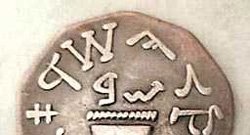Parshas Ki Sissa begins with the mitzvah of machatzis hashekel. HaShem tells Moshe Rabbeinu to take a census of the Jewish people. Instead of counting heads, every Jew is commanded to give half of a silver shekel. By counting the half shekalim, Moshe would know the number of Jewish people. 
As the people brought their machatzis hashekel, the silver coins added up. What did they do with all that silver? It was used for the adonim of the mishkan. The adonim are the sockets which are the base for the wooden boards which make up the walls of the mishkan.
The mitzvah of machatzis hashekel teaches us about ahavas Yisrael. Every Jew brought exactly half a shekel - no more, no less. This mitzvah reminds us that we all need each other, and that in order to have one whole, we need two halves. The shekel that each Jew gave was not complete until another Jew also gave half a shekel.
These half shekalim were used to make the base of the Mishkan, showing us that ahavas Yisrael is the basis for our lives.
After the mitzvah of machatzis hashekel, the parshah tells us about the kiyor hanechoshes, a large copper water-basin in the mishkan. Every morning, the kohanim would wash their hands and feet from this basin before bringing the sacrifices in the mishkan.
Copper is a simple, common metal. Although we can polish it and make it look bright and shiny, it is not used like gold, to make expensive jewelry, or like silver, to make silver dollars or other valuable coins. It's not even like nickel, which is used to make quarters or nickels. Copper is like the smallest coin, the penny.
The beautiful adonim were made of silver, and many parts of the Mishkan were made of gold. Why was the basin made of simple copper? Because HaShem wants us to use everything in this world in a holy way. If we only used gold and silver in the Mishkan, we might think that less precious materials cannot be made holy. The basin was made of copper, a less precious metal, because HaShem wants us to remember that everything can be used in a holy way.
And this was the first vessel which the kohanim used every day. This helps remind us that we should begin our day knowing that everything in this world should be used in a holy way.
(Adapted from Likkutei Sichos, Vol. VI, Parshas Terumah)
|
